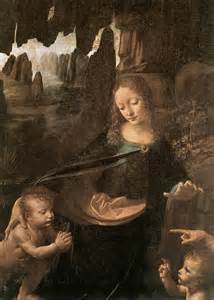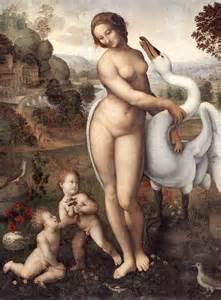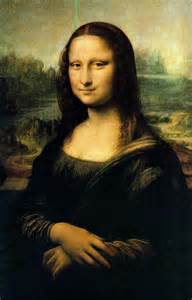Da Vinci's Impact Upon the Art World
Da Vinci today is recognized mostly through his paintings. Many of his paintings were famous in both the Renaissance times and in the modern world. However, they are more than just pretty pictures; each and every one of his paintings have made strong impacts on the world today.
The Mona Lisa
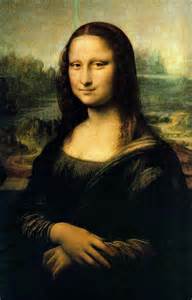
For most, upon hearing the name Leonardo Da Vinci, the first thing that comes to mind is his painting, the Mona Lisa. Even children are aware of the Mona Lisa from a young age. It is arguably the most famous painting in the world. But why is this? What makes the Mona Lisa so special that even those who do not know a thing about art, know this painting? The Mona Lisa is a representation of Da Vinci’s passion for art, his new discoveries, and willingness to try things new. When looking at the Mona Lisa, an immense part of its popularity came from the fact that the painting seemed to break every aspect of traditional painting, yet still uphold Renaissance techniques and values. Leonardo first started to stray from the cliché techniques of Renaissance paintings by using a different type of canvas; this canvas was called cottonwood paneling, and it was what caused the longevity of the Mona Lisa. Another way that the Mona Lisa broke tradition was through the pose of the lady in the painting. She was painted from the waist up, with her hands sitting neatly on her lap. This differed from previous paintings, which depicted people in full length. Leonardo not only changed small details of the painting, but he also introduced new painting techniques. Usually, people would paint both the background and the front of the painting with the same amount of detail. However Leonardo used a technique called sfumato, which meant that he blurred the edges and the background to form a more realistic painting. This technique is also used on Mona Lisa’s face. Another technique he used is called chiaroscuro. This was created by Da Vinci himself. It is done by using light and dark colors to add contrast to the painting. It draws out certain elements in the painting yet add subtle realism. It is a symbol of art itself. Symbols themselves are highly influential and powerful. Just by looking at a symbol, we can figure out the associations and meanings that are behind it. The Mona Lisa tells a story without using words. It symbolizes all of Da Vinci’s art and the revolution that he brought about through it. It symbolizes a change in styles and the development of the arts in general. It symbolizes timeless works of art that still remain treasures and pieces of history that have maintained themselves through the harsh winds of time.
The Last Supper
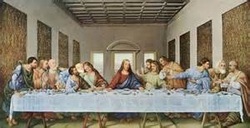
One of the most iconic images in the world today is of the 'Last Supper'. This event is recorded in the Christian Bible and is said to be Jesus Christ's last supper with his disciples, before his execution. This significant event was captured first by Da Vinci. In 1482, Lorenzo Di Medici--a powerful ruler in Florence, Italy-- patronized Leonardo Da Vinci to create the The Last Supper; this was because Lorenzo Di Medici desired to give this painting to Ludovico Sforza, the duke of Milan. This painting was famous in Renaissance times because, like the Mona Lisa, it strayed from traditional techniques yet still maintained Renaissance values. The difference is mainly in the type of paint used. Usually, in Renaissance times, the type of paint used was oil paints because it increased the longevity of the painting and it gave the painting a sense of depth. However, Da Vinci used a paint called tempura, which was normally used in Medieval times. Leonardo improved upon the technique; instead of painting of painting on wet plaster, he painted on dry plaster so that he would not have to wait as long before adding a second layer of paint. This also allowed the painter to capture the intensity of the emotion at the time instead of him becoming frustrated while waiting for the plaster to dry.
Art Techniques
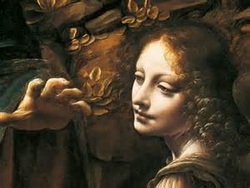
Sfumato Technique:
Leonardo Da Vinci as well invented a technique that helped softened the colors by using a dark glaze around the edge of objects. This technique is known as sfumato, this is taken from the Italian word for smoke, fumo. This produces an effect that makes the outer edges of the objects of people in the painting appear to be slightly obscured by a haze or smoke.
Leonardo Da Vinci as well invented a technique that helped softened the colors by using a dark glaze around the edge of objects. This technique is known as sfumato, this is taken from the Italian word for smoke, fumo. This produces an effect that makes the outer edges of the objects of people in the painting appear to be slightly obscured by a haze or smoke.
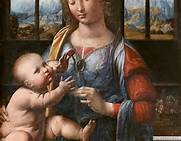
Chiarusco Technique:
Leonardo shaped his objects in two dimensions by capturing the light and shadow of three dimensions. This use of light and shadow was called chiaroscuro. Da Vinci's use of chiaroscuro was an innovation in a day when most paintings were flattened views of the subject. Leonardo studied anatomy and made copious notes on most of his subjects. He left far more drawings in his notebooks than he left paintings for us to study.
Leonardo shaped his objects in two dimensions by capturing the light and shadow of three dimensions. This use of light and shadow was called chiaroscuro. Da Vinci's use of chiaroscuro was an innovation in a day when most paintings were flattened views of the subject. Leonardo studied anatomy and made copious notes on most of his subjects. He left far more drawings in his notebooks than he left paintings for us to study.
